Alfred Hough
Open Aspect Target Sentiment Classification with Natural Language Prompts
Sep 08, 2021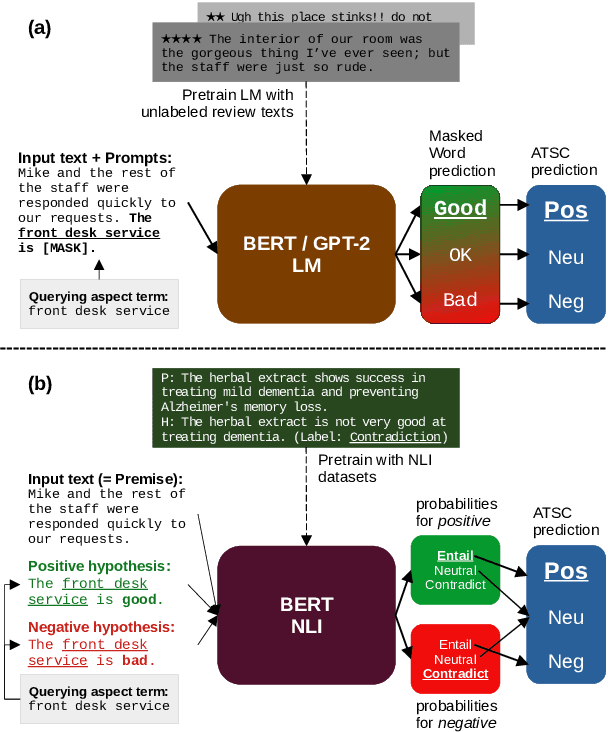
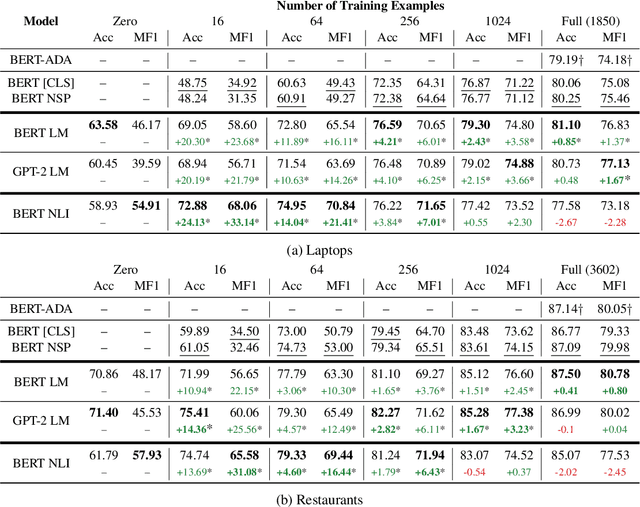
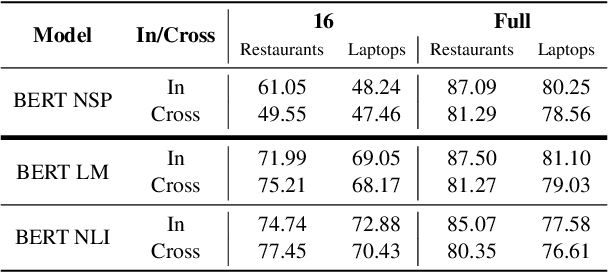
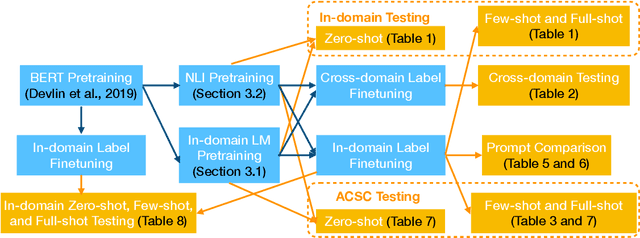
Abstract:For many business applications, we often seek to analyze sentiments associated with any arbitrary aspects of commercial products, despite having a very limited amount of labels or even without any labels at all. However, existing aspect target sentiment classification (ATSC) models are not trainable if annotated datasets are not available. Even with labeled data, they fall short of reaching satisfactory performance. To address this, we propose simple approaches that better solve ATSC with natural language prompts, enabling the task under zero-shot cases and enhancing supervised settings, especially for few-shot cases. Under the few-shot setting for SemEval 2014 Task 4 laptop domain, our method of reformulating ATSC as an NLI task outperforms supervised SOTA approaches by up to 24.13 accuracy points and 33.14 macro F1 points. Moreover, we demonstrate that our prompts could handle implicitly stated aspects as well: our models reach about 77% accuracy on detecting sentiments for aspect categories (e.g., food), which do not necessarily appear within the text, even though we trained the models only with explicitly mentioned aspect terms (e.g., fajitas) from just 16 reviews - while the accuracy of the no-prompt baseline is only around 65%.
Efficient Graph-based Word Sense Induction by Distributional Inclusion Vector Embeddings
May 29, 2018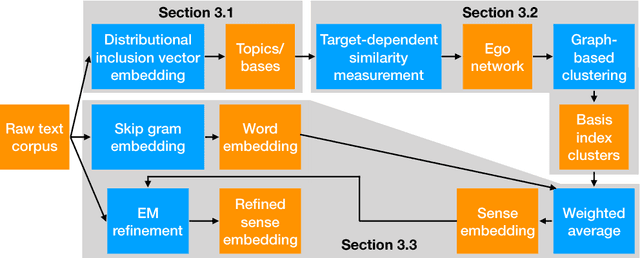



Abstract:Word sense induction (WSI), which addresses polysemy by unsupervised discovery of multiple word senses, resolves ambiguities for downstream NLP tasks and also makes word representations more interpretable. This paper proposes an accurate and efficient graph-based method for WSI that builds a global non-negative vector embedding basis (which are interpretable like topics) and clusters the basis indexes in the ego network of each polysemous word. By adopting distributional inclusion vector embeddings as our basis formation model, we avoid the expensive step of nearest neighbor search that plagues other graph-based methods without sacrificing the quality of sense clusters. Experiments on three datasets show that our proposed method produces similar or better sense clusters and embeddings compared with previous state-of-the-art methods while being significantly more efficient.
 Add to Chrome
Add to Chrome Add to Firefox
Add to Firefox Add to Edge
Add to Edge